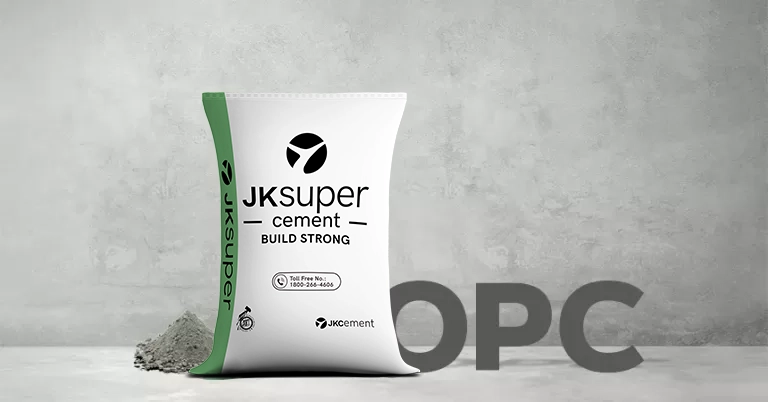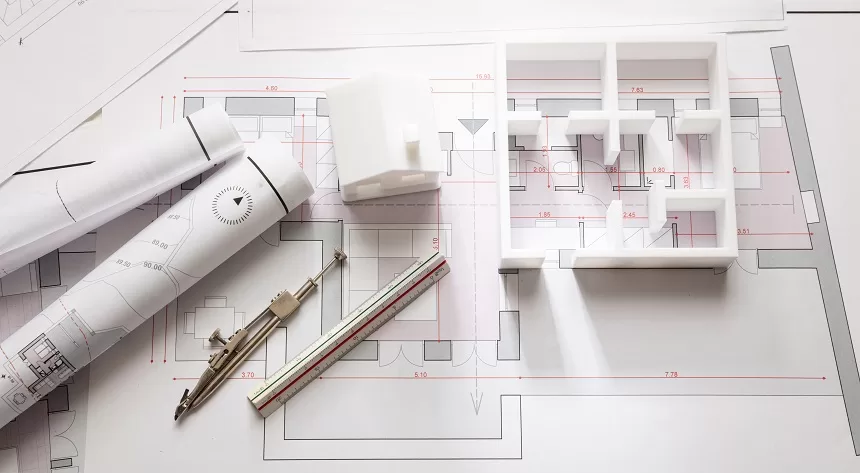Different grades of cement exist to cater to various construction needs and project requirements. The differences in cement grades are primarily based on the compressive strength they can achieve after a specific curing period. The strength of cement is crucial for ensuring the stability and durability of structures. While you can use numerous types of cement, here, you can get information on Ordinary Portland Cement (OPC) and its grades.
Not all construction projects require the same level of strength, and using the appropriate grade of cement is essential to meet specific requirements. For example, smaller-scale residential constructions or plastering work may not need extremely high strength, so a lower grade like 43 grade cement can be used.
On the other hand, large-scale construction projects like high-rise buildings, bridges or heavy infrastructure need cement with higher strength to endure the large loads. This is when higher-grade cement like 53 grade cement comes into play, as it provides the necessary strength to ensure the safety and stability of such structures.
43 Grade Cement
This is a type of Ordinary Portland Cement (OPC) that is commonly used in general construction projects.
43 Grade Cement is called so because it refers to the minimum compressive strength that the cement can achieve after 28 days of curing, which is 43 megapascals (MPa). The term ‘43 grade’ is used to categorise this type of OPC based on its strength characteristics.
Various Uses of 43 Grade Cement
43 Grade cement can be used for various general construction purposes. Some common applications of 43 Grade cement include the following.
Residential Construction
It can be used for the construction of residential buildings, such as apartments, houses and villas. It provides the necessary strength and durability for constructing walls, columns, slabs and other structural elements.
Commercial Construction
43 Grade cement is suitable for commercial construction projects like offices, shopping malls, hotels and hospitals. It can be used for constructing foundations, beams, pillars and other load-bearing structures.
Roads and Bridges
This grade of cement can be used in the construction of roads, highways and bridges. It provides the required strength for constructing pavements, sidewalks and other infrastructure elements.
Industrial Structures
43 grade cement is also suitable for industrial structures such as factories, warehouses and storage facilities. It can be used for constructing heavy-duty floors, walls and industrial structures that require high strength.
53 Grade Cement
It is a type of OPC that has a compressive strength of 53 megapascals (MPa) after 28 days of curing. It is commonly used for construction purposes where high-strength concrete is required. This grade of cement is known for its superior strength and durability properties, thus making it suitable for projects such as bridges, high-rise buildings and heavy-duty infrastructure.
Various Uses of 53 Grade Cement
53 Grade cement can be used in a variety of construction applications where high strength and durability are required. Some common uses of 53 grade cement include the listed examples.
Structural Projects
It is suitable for construction projects that involve high-strength concrete, such as bridges, dams, foundations and high-rise buildings.
Large-Scale Infrastructure Projects
53 Grade cement is often used in the construction of highways, airports, tunnels and other infrastructural projects where durability and strength are essential.
Heavy Industrial Construction
Industries such as oil refineries, power plants and chemical plants require cement with high strength and durability. Hence, grade 53 cement is most suitable in this case.
Commercial and Residential Construction
For constructing commercial buildings, residential complexes and individual houses, 53 grade cement can be used to ensure sufficient strength and longevity of the structures.
Differences between 43 Grade and 53 Grade Cement
The major differences between 43 grade and 53 grade cement lie in their compressive strength, fineness.
Compressive Strength
The first notable difference lies in the compressive strength. 43 grade cement is designed to achieve a minimum compressive strength of 43 megapascals (MPa) after 28 days of curing, while 53 grade cement is designed to reach a higher minimum compressive strength of 53 MPa. This higher strength in 53 grade cement makes it more suitable for structural projects requiring greater load-bearing capacity.
Fineness
Fineness is another significant factor. 43 grade cement needs to have a minimum fineness of 225 square meters per kilogram, whereas 53 grade cement requires a higher minimum fineness of 370 square meters per kilogram.
It is important to note that both 43 grade and 53 grade cement meet the necessary chemical and physical requirements specified by the Indian standards. The selection of the grade of cement should be based on the structural design requirements, load-bearing capacity and other specific considerations of the construction project.
For more information, check out the various grades of cement at JK Cement.
FAQs
How is OPC made?
Ordinary Portland Cement is made by intimately grinding Portland clinker and gypsum. Raw ingredients like lime and clay are mixed and heated at extremely high temperatures to form Portland clinker. Additives may be added at this stage.
What is the difference between 43 and 53 grade cement?
The main difference between 43 and 53 grade cement is its compressive strength. 43 grade cement has a minimum compressive strength of 43 MPa, while 53 grade cement has a higher minimum compressive strength of 53 MPa after 28 days of curing.
When should I use 43 grade cement?
43 grade cement is commonly used in general construction projects where high strength is not the primary requirement. It is suitable for applications like plastering, flooring, brickwork, and small-scale residential construction.
What are the advantages of using 53 grade cement?
53 grade cement offers higher strength and durability compared to 43 grade cement. It is suitable for structural projects that require greater load-bearing capacity, such as bridges, high-rise buildings, heavy infrastructure and industrial construction.
Can 43 grade cement be used in place of 53 grade cement?
While 43 grade cement can be used in some cases, it may not meet the strength requirements for certain projects.














